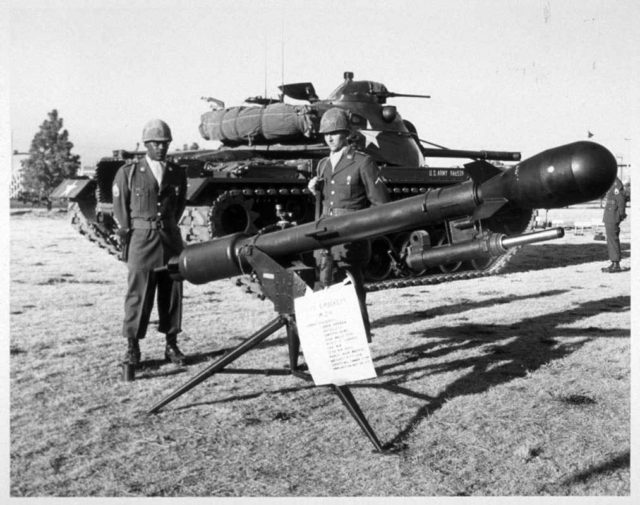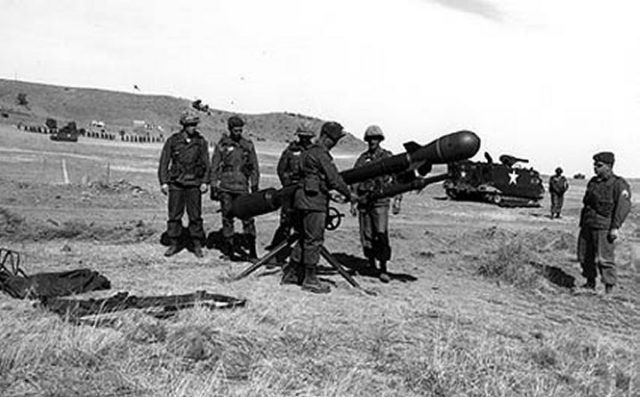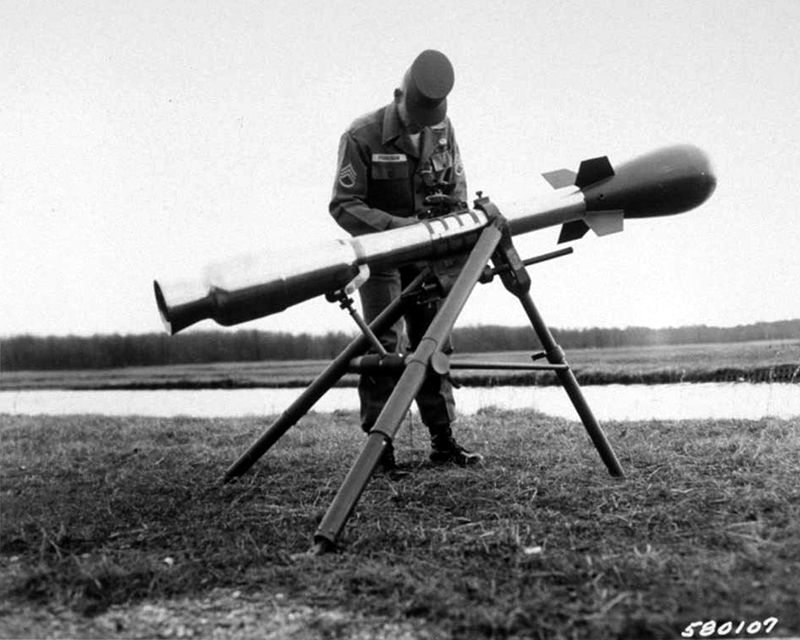If you think the tensions between Russia and United States have reached the heights of insanity now, you should invest some time to learn about the Cold War and your perception of hostility will change for good.

Soon after the Second World War reached an abrupt end with the capture of Berlin and the nuclear bombing of Hiroshima and Nagasaki, the United States had to confront a new, much more potentially devastating foe – the Soviet Union. The highly ambitious Stalin gave the US military goosebumps with his show of muscle on a regular basis.
Soon after the development of the nuclear bombs, the United States extended its nuclear program to tackle the growing Soviet influence in Eastern Europe. During the late 1950s and early 1960s, the American military was extensively working on their dream project of building a nuclear rocket launcher, with the ability to fire the world’s smallest nuclear rocket.
The weapon was named Davy Crockett or the M-28/29, and the US successfully tested the tiny yet massively destructive weapon.
This miniature nuke was designed and built to be used on tactical level, on a battlefield level if you like, unlike the pile of other nuclear weapons with the capability to annihilate entire cities and towns.

NATO was, in fact, looking for such an invention to delay the potential Soviet advance if it came to that, and a communist Europe was in no shape and form in the interest of the United States; therefore, the result was ‘Davy Crocket’ W54, the most compact nuclear warhead ever deployed by the United States, with a range of over two and a half miles depending on the configuration used.
As it was the height of Cold War, no one was really concerned about the potential danger this tiny nuke posed (apart from some prominent scientists), so there wasn’t much morality involved; hence American developers had a sort of free hand in building anything they deemed appropriate to counter the communist threat.
From 1961 to 1971, the Davy Crocket was actively deployed despite various concerns raised by the roundtable Atomic Audit reports, wherein it was found that these tiny nukes had serious flaws and the accuracy was significantly questionable, plus these weapons were not effectively integrated into an actual war plan.
Then again, it was the Cold War, and nobody cared about such reports, and in the end some 2,100 Davy Crockets (or some variations of the same model) were made functional all over the European continent and other strategical points around the world, costing the United States taxpayers a whopping half a billion dollars.
These small sized nukes were initially intended to be used by the United States Army ground personnel in a battle and in theory to create havoc on a small scale, after being fired from a bazooka-like firing mechanism.

As far the destructive power of these strategic nuclear weapons is concerned, the early tests revealed that one such weapon could annihilate an area as big as two-block of flats with an estimated destructive yield of 10 tons of TNT.
However, as the idea of the strategical nuke settled in the later version came in with even more destructive powers, with the yield approaching 250 tons of TNT.
Though this yield might seem high to a layman, when compared to the traditional nukes which had the destructive power of thousands of tons of TNT, these small weapons were nothing more than a cherry on a cake, but still destructive enough in human terms.
